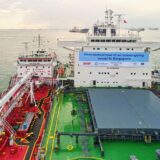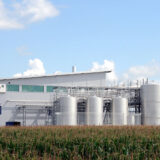Tokyo scientists uncover gene to enable higher oil production from microalgae
Biofuels are an environmentally‐friendly, low‐cost and renewable energy source that show promise for reducing reliance on fossil fuels. Although many biofuels have been created from plant and animal fats, scientists are increasingly interested in the potential for large‐scale oil synthesis from microalgae.
Now, Hiroyuki Ohta at Tokyo Institute of Technology, together with scientists based at institutions across Tokyo, Japan, have uncovered a way of enhancing the production of fat‐based molecules called triacylglycerols in the Nannochloropsis algal strain NIES‐2145, thereby increasing oil synthesis from microalgae.
Triacylglycerols, or TAGs, are a class of lipids which form the backbone to biofuels. The molecules are comprised of glycerol attached to three fatty acid chains, and microalgae is known to produce more TAGs under nutrient stress conditions. When the algal strain Chlamydomonas reinhardtii is starved of phosphorus, TAGs accumulate rapidly following the overexpression of an enzyme known as CrDGTT4, which in turn is triggered by gene promoter SQD2.
Ohta and his team conducted genetic analysis of NIES‐2145 and uncovered a homolog of the SQD2 gene. This implied a common expression control system between algal species in response to nutrient stress. The researchers decided to place both CrDGTT4 from C. reinhardtii and its SQD2 promoter into NIES‐2145 to find out if this combination could control levels of TAGs production. Their attempt was successful—the SQD2 promoter was able to drive CrDGTT4 expression in NIES‐2145 under phosphorus starvation, crucially without disturbing the membrane structure of the microalgae, and the production of TAGs in NIES‐2145 increased as a result. Notably, incorporation of oleic acid, a preferentially utilized substrate by CrDGTT4, into TAG molecules was enhanced.
The findings point to the possibility of manipulating the production of TAGs, and therefore biofuel production, in multiple microalgal strains.
Further investigations are needed in order to fully understand the processes behind lipid remodeling during phosphorus starvation in algae before these methods are trialled on a larger scale.














